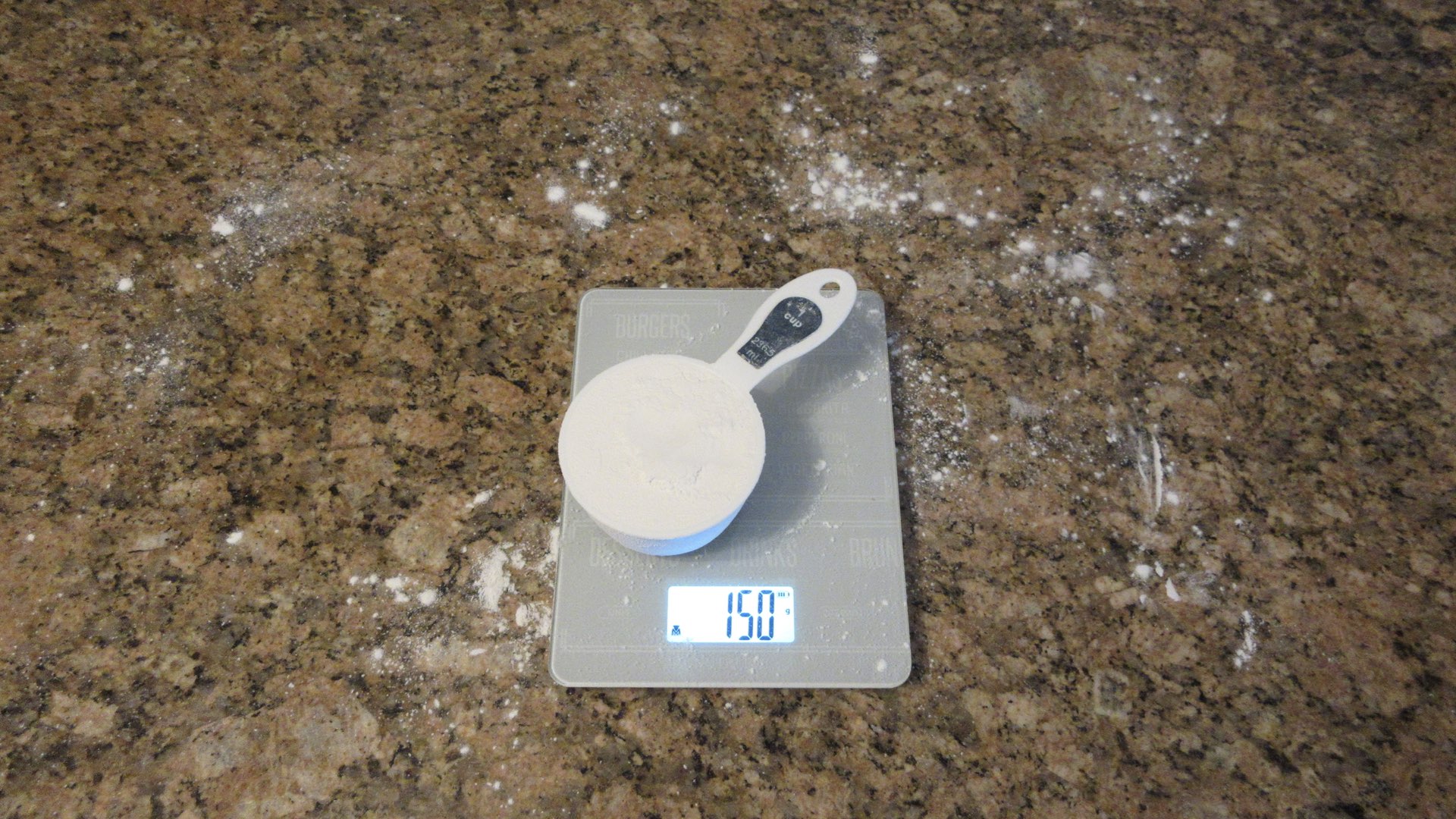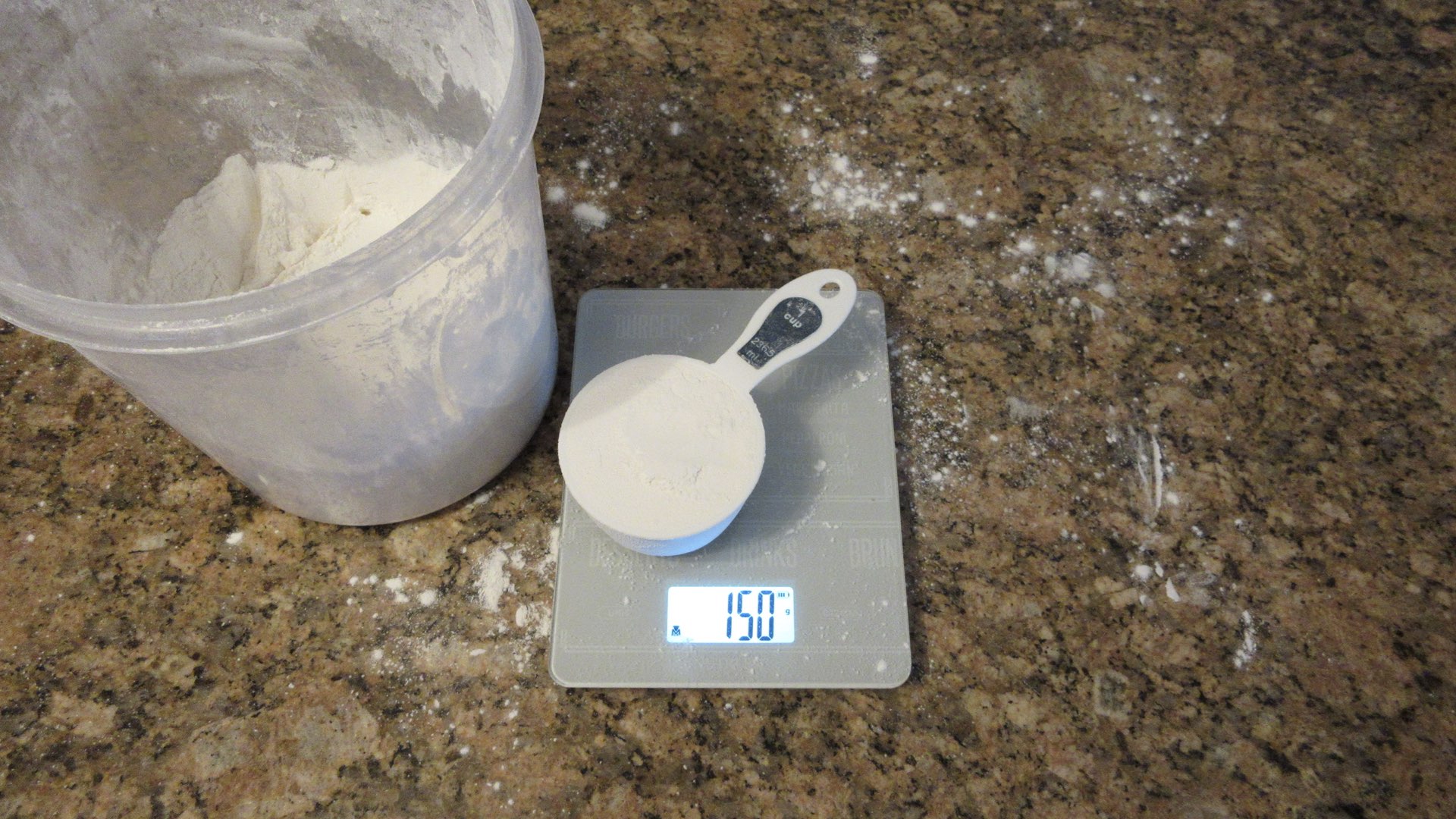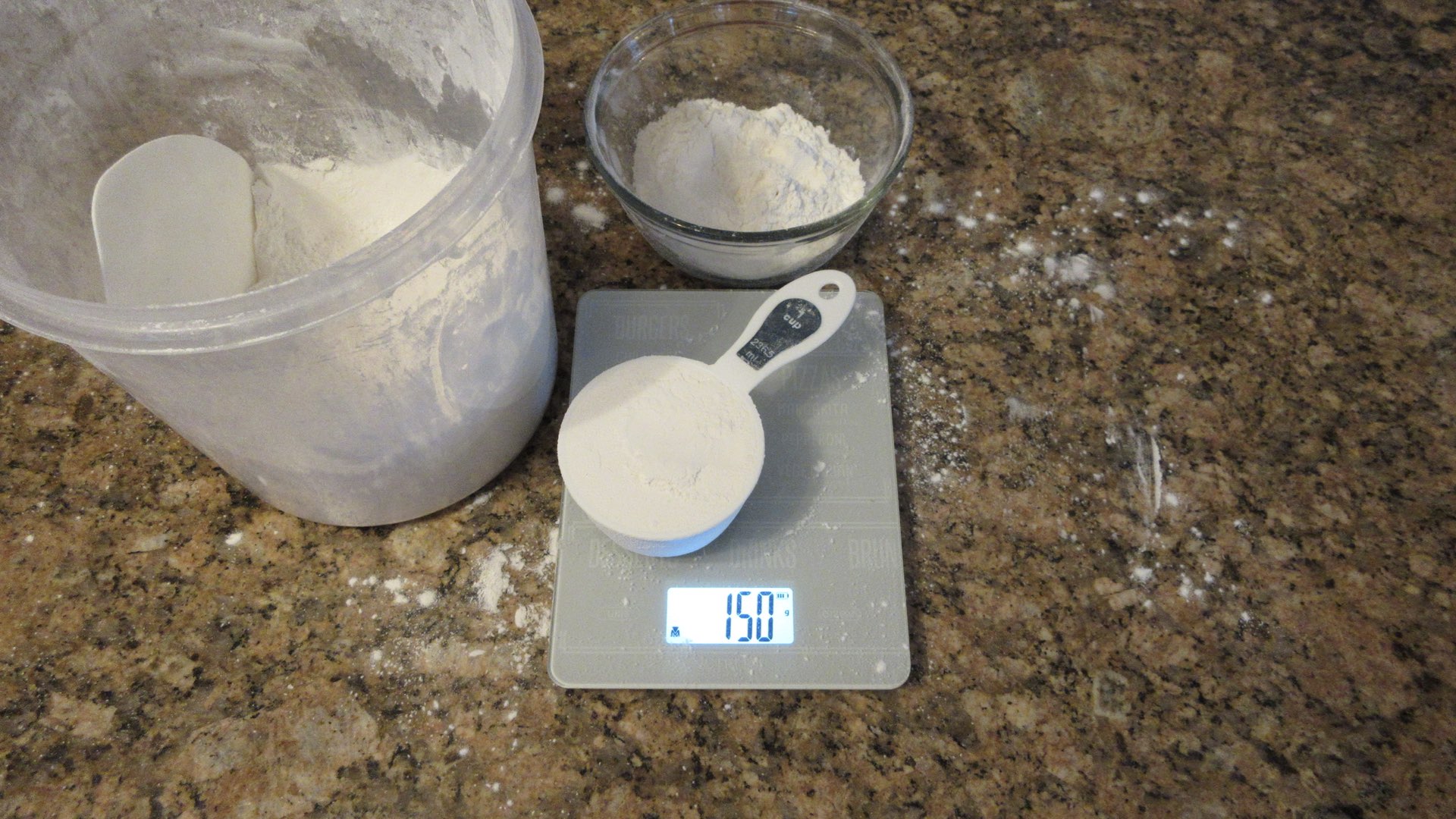Difference in Grain, Equipment and Manufacturers Cause Discrepancies
A cup of flour will weigh differently for a variety of reasons. One manufacturer will list 120 grams, whereas another 135 grams. Why is there such a discrepancy? The weight of flour can vary on a lot of factors. It could be the type of grain used, how dry the flour was at measurement, the sifter the company uses and even the equipment used to measure the flour. On average, expect a cup of flour to weigh between 120 – 165 grams.
Seriously, How Much Does a Cup of Flour Weigh?
If the flour is well sifted, expect one cup of flour to weigh an average of 120 grams. But if you do not sift the flour and scoop it straight out of the bag or container? One cup of flour unsifted flour weighs 150 grams on average.
For our particular website, we have decided to use 150 grams for one cup of flour. Most people starting out baking do not typically pre-sift, stir or spoon their flour into the measuring cup before leveling it off. This is a skill that isn’t often taught these days by mothers and grandmothers handing down traditions. Most people are self taught. And most people do what makes the sense. The majority will simply scoop the cup straight from the bag or container. Some will shake, brush or level off the excess. Other have a little mound of flour and think that’s close enough. Because of these techniques, the flour will always weigh more than what is listed on the bag or in many recipes.
Therefore, we decided long ago to continue to write recipes with one cup of flour equaling 150 grams. That way, it will benefit most of the casual bakers out there. And if you are a more serious baker? You should be weighing your dry ingredients anyway.

What Else Causes a Cup of Flour to Vary in Weight?
In addition to manufacturers, people’s techniques and the type of flour being used, there are a few more reasons flour can vary in weight. Did you know that the environment and even the brand of measuring cup comes into play?
Environment Plays a Factor
How you store flour can affect how much a cup of flour weighs. Flour will absorb moisture from the air and if you live in a humid environment, it will trap moisture if not stored in a cool, dry place. We have to store our flour in air tight containers or the flour will actually feel damp and can mold quickly in our climate.
Lack of Equipment or Ability
Another reason flour can vary in weight is simply due to lack of equipment or ability to accurately weigh ingredients. Beginners often don’t even know what a sifter is used for, let alone where to find one. Or perhaps they don’t want to invest the money as they are just starting out, are only going to be a casual baker, don’t have the room or the funds for a lot of extra equipment. And that is okay!
Or perhaps the person has the sifter but lacks the ability to use it. What if it is the crank style or even the ones you bang against your hand and you have an injury or an impairment? They can be down right impossible to use! That happened to me when I started baking again. Does this mean you can’t bake cakes? Absolutely not! This is where weighing your ingredients or using the 150g per cup of flour as a guideline will shine. By understanding most casual bakers use common sense and don’t spend hours learning skills and technique before making their first baked goods, we set people up for success and design our recipes with that in mind.

Measuring Cups Can Vary Slightly
When weighing your ingredients, do you have the same set of measuring cups or do you have more than one set? If you have more than one set, each cup can have slight variations. I have over six sets of measuring cups as people love to buy these for me as gifts. Every single one of them will give me a different measurement. Some will weigh as little as 135, others as high as 185 grams! That’s a wide variation.
Since the market for baking supplies has become so global and many companies now make measuring cups, there can be discrepancies in how much volume the cup will actually hold. It may say it is one cup, but sometimes, it doesn’t. This lack of quality control is enough to make the cup of flour swing widely. When you are making a particular recipe, be sure to stick with the same set for best results.

Ditch the Cups for More Accuracy
In today’s world, a lot of recipes are found written in grams, ounces or pounds alongside the amounts written in measuring cups. For the best results, we highly recommend you ditch your measuring cups and move over to weighing your ingredients. Why? I hate to break it to you, but many other dry ingredients will have the same type of discrepancies as flour. Even liquid measurements aren’t always reliable. By weighing everything as opposed to relying on volume measurements, you’ll always have that perfect slice of bread, fluffy delicate cakes and fantastic cookies.

0 Comments